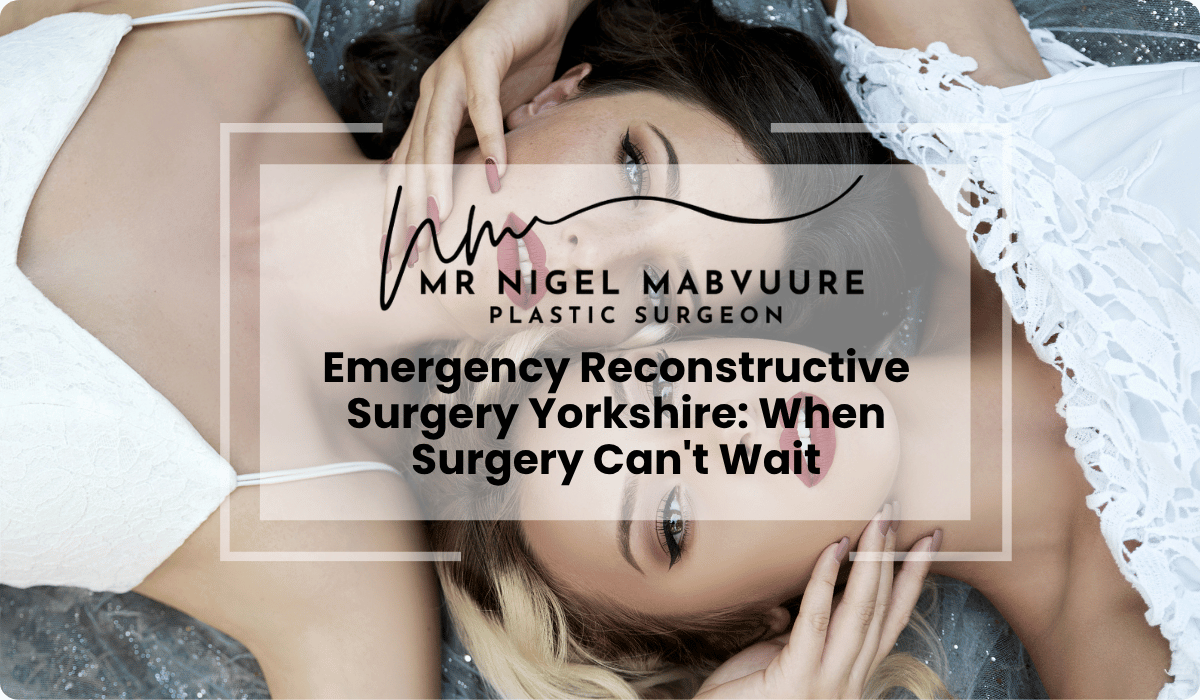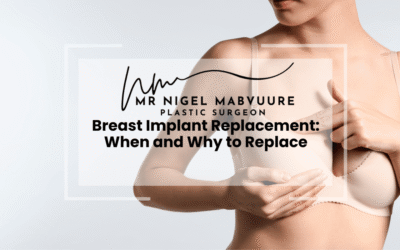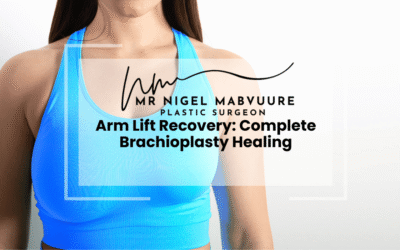Key Takeaways
- Emergency plastic surgery addresses time-critical injuries where prompt intervention directly impacts long-term functional and aesthetic outcomes.
- Common trauma injuries requiring immediate reconstruction include hand trauma (30% of cases), facial injuries, severe burns, and degloving injuries.
- Yorkshire’s trauma centers operate on a tiered classification system: Category 1 (immediate intervention within hours), Category 2 (within 24 hours), and Category 3 (within 24-72 hours).
- For critical cases like digit replantation, surgery aims to begin within 4-6 hours of injury to maximize tissue viability.
- Advanced techniques available in Yorkshire include microsurgical reconstruction, perforator flap surgery, negative pressure wound therapy, and computer-assisted surgical planning.
- Rehabilitation begins 24-48 hours post-surgery with specialized care teams, including physical therapy, occupational therapy, and psychological support.
- Major emergency plastic surgery services in Yorkshire are available at Leeds General Infirmary, Sheffield’s Northern General Hospital, Hull Royal Infirmary, and York Hospital.
Table of Contents
- Understanding Emergency Plastic Surgery: When Time is Critical
- Common Trauma Injuries Requiring Immediate Reconstruction
- The Emergency Reconstructive Surgery Process in Yorkshire
- What Constitutes Urgent Reconstruction? Assessment Criteria
- Timeline: How Quickly Can Emergency Surgery Be Performed?
- Advanced Techniques in Trauma Reconstruction Available Locally
- Recovery and Rehabilitation After Emergency Reconstructive Surgery
- Finding Emergency Plastic Surgery Services in Yorkshire
Understanding Emergency Plastic Surgery: When Time is Critical
Emergency plastic surgery encompasses reconstructive procedures that cannot be delayed without risking permanent functional impairment or significant aesthetic compromise. Unlike elective cosmetic procedures, emergency reconstructive surgery addresses acute injuries where the timing of intervention directly impacts the patient’s long-term outcome.
The critical window for intervention varies by injury type. For instance, severed digits or limbs require microsurgical reattachment within 4-6 hours for optimal success, while facial lacerations ideally should be repaired within 24 hours to minimise scarring. Complex injuries involving exposed bone, tendon, or nerve typically require immediate surgical attention to prevent infection and preserve function.
In Yorkshire, emergency plastic surgery services operate through a coordinated trauma network, with specialised units available at major hospitals including Leeds General Infirmary and Sheffield’s Northern General Hospital. These centres maintain dedicated plastic surgery trauma teams available 24/7 to respond to emergencies ranging from industrial accidents to domestic injuries.
The decision to classify a case as a surgical emergency involves careful assessment of several factors: the risk of infection, potential for permanent disability, likelihood of tissue death, and the psychological impact of delayed treatment. This assessment is typically conducted by experienced plastic surgeons working alongside emergency medicine specialists to determine the optimal timing and approach for reconstruction.
Common Trauma Injuries Requiring Immediate Reconstruction
Trauma reconstruction encompasses a wide spectrum of injuries that require prompt surgical intervention. In Yorkshire, certain patterns of injury frequently necessitate emergency plastic surgery services. Hand trauma represents approximately 30% of emergency reconstructive cases, including tendon lacerations, nerve injuries, and complex fractures that threaten function. These injuries often occur in industrial settings or during DIY activities and require immediate microsurgical expertise to preserve fine motor skills.
Facial trauma constitutes another significant category, with complex lacerations, orbital fractures, and mandibular injuries demanding urgent attention. The aesthetic and functional implications of facial injuries make timely reconstruction particularly crucial. Proper alignment of facial structures within the first 48 hours significantly improves long-term outcomes and reduces the need for secondary revisions.
Severe burns represent a third critical category requiring specialised plastic surgery intervention. Yorkshire’s burn centres provide immediate debridement and temporary coverage for deep burns, followed by definitive reconstruction. Fourth-degree burns exposing underlying structures like tendons or bone require emergency surgical coverage to prevent infection and tissue desiccation.
Degloving injuries, where skin and subcutaneous tissue are forcibly separated from underlying structures, represent some of the most challenging emergency cases. These injuries, often seen in road traffic accidents or industrial machinery incidents, require immediate surgical intervention to preserve tissue viability and prevent extensive necrosis. While elective procedures like facelifts transform appearance gradually, trauma reconstruction aims to restore both form and function in the critical aftermath of injury.
The Emergency Reconstructive Surgery Process in Yorkshire
The emergency reconstructive surgery pathway in Yorkshire follows a structured approach designed to optimise outcomes while managing resources effectively. Upon arrival at an emergency department with a complex injury requiring plastic surgical expertise, patients undergo initial assessment by emergency medicine specialists who activate the plastic surgery on-call team when appropriate.
Yorkshire’s major trauma centres employ a hub-and-spoke model, with regional hospitals transferring complex cases to specialised units in Leeds, Sheffield, and Hull. These centres maintain dedicated trauma theatres with microsurgical capabilities and specialised equipment essential for complex reconstruction. The plastic surgery trauma team typically includes a consultant plastic surgeon, specialised anaesthetists, and nursing staff with expertise in reconstructive procedures.
Pre-operative preparation involves comprehensive imaging to assess the full extent of injuries, particularly when complex fractures or vascular compromise is present. CT angiography has become standard practice for evaluating blood supply to injured tissues, while 3D reconstructions assist in planning complex facial trauma repairs. Simultaneously, the surgical team prepares for potential tissue transfers, identifying suitable donor sites for flaps or grafts that may be required.
The surgical approach prioritises four key principles: controlling contamination, preserving viable tissue, restoring critical structures, and providing appropriate soft tissue coverage. In Yorkshire’s trauma units, consultant-led teams perform these procedures with access to microsurgical equipment, specialised implants, and advanced wound management technologies. Following surgery, patients transition to dedicated plastic surgery wards or high-dependency units where specialised nursing care supports the critical early recovery phase.
What Constitutes Urgent Reconstruction? Assessment Criteria
Determining which cases require urgent reconstruction involves systematic assessment using established clinical criteria. In Yorkshire’s trauma centres, plastic surgeons employ a tiered classification system to prioritise cases based on time-sensitivity and potential consequences of delay. Category 1 emergencies require immediate intervention within hours and include amputated parts requiring replantation, open fractures with soft tissue compromise, and injuries with vascular compromise threatening tissue viability.
Category 2 urgent cases typically require surgery within 24 hours and include complex facial lacerations, certain hand injuries where function is threatened but not immediately compromised, and wounds with significant contamination requiring debridement. Category 3 cases can typically wait 24-72 hours and include less complex soft tissue injuries and certain burn reconstructions after initial stabilisation.
The assessment process incorporates several key factors. Vascular status is evaluated through clinical examination, Doppler studies, and sometimes angiography to identify compromised blood supply requiring urgent revascularisation. Neurological assessment identifies nerve injuries that benefit from primary repair, particularly in the hand and face where functional outcomes correlate strongly with early intervention.
Wound contamination represents another critical factor, with heavily contaminated injuries from agricultural or industrial accidents requiring urgent debridement to prevent infection. The presence of foreign bodies, particularly organic material, necessitates prompt surgical exploration. Finally, exposure of critical structures such as tendons, nerves, vessels, bone, or joints constitutes an urgent indication for reconstruction to provide appropriate soft tissue coverage and prevent desiccation, infection, and functional loss.
Timeline: How Quickly Can Emergency Surgery Be Performed?
The timeline for emergency reconstructive surgery in Yorkshire follows nationally established standards while adapting to local resources and patient needs. For the most critical cases involving replantation or revascularisation, Yorkshire’s specialised units aim to commence surgery within 4-6 hours of injury. This “golden window” is particularly crucial for amputated digits, where tissue viability diminishes rapidly beyond six hours of cold ischaemia time.
For complex facial trauma, Yorkshire’s maxillofacial and plastic surgery teams typically coordinate intervention within 24 hours, recognising that early reduction of facial fractures and repair of soft tissue injuries significantly improves aesthetic outcomes. The regional trauma network maintains dedicated emergency theatre capacity specifically for these time-sensitive cases, with consultant-led teams available around the clock.
The pre-operative preparation timeline has been streamlined through several initiatives. Rapid trauma imaging protocols allow comprehensive CT assessment within 30 minutes of arrival for major trauma cases. Point-of-care testing expedites pre-operative blood results, while emergency anaesthetic assessment pathways facilitate swift theatre preparation. For patients requiring transfer between facilities, the Yorkshire Air Ambulance service provides rapid transport to definitive care centres.
Once the decision for emergency surgery is made, the mobilisation of appropriate surgical teams typically occurs within 30-60 minutes during working hours and within 60-90 minutes out-of-hours. Complex cases requiring multiple specialties, such as combined orthopaedic and plastic surgical procedures for open fractures, benefit from established trauma protocols that coordinate simultaneous team availability. This coordinated approach ensures that even the most complex reconstructions can commence within hours of presentation to emergency services.
Advanced Techniques in Trauma Reconstruction Available Locally
Yorkshire’s trauma reconstruction centres have developed significant expertise in advanced surgical techniques that optimise outcomes for emergency cases. Microsurgical reconstruction represents a cornerstone capability, with centres in Leeds and Sheffield offering 24/7 access to operating microscopes and specialised instruments for nerve repair, vessel anastomosis, and free tissue transfer. These techniques allow surgeons to reattach amputated digits and transfer tissue from distant sites to reconstruct complex defects.
Perforator flap surgery has revolutionised emergency reconstruction by providing versatile options for covering complex wounds while minimising donor site morbidity. Yorkshire’s units regularly employ DIEP, ALT, and propeller perforator flaps for emergency soft tissue coverage, preserving underlying muscle function while providing robust coverage for exposed critical structures. These technically demanding procedures are performed by subspecialist teams with dedicated microsurgical training.
Negative pressure wound therapy (NPWT) has been integrated into the emergency reconstruction pathway, allowing temporary management of complex wounds while preparing patients for definitive reconstruction. Yorkshire’s units employ advanced NPWT systems with instillation capabilities for contaminated wounds, reducing bacterial load and promoting granulation tissue formation before definitive closure.
Computer-assisted surgical planning has transformed approach to complex craniofacial trauma. Using rapid-prototype 3D models generated from CT data, surgeons can plan precise reconstruction of orbital and maxillofacial injuries. Intraoperative navigation systems further enhance accuracy, particularly for orbital floor and zygomaticomaxillary complex reconstructions. These technologies, available at major trauma centres in Yorkshire, allow surgeons to achieve precise anatomical reconstruction even in the emergency setting, significantly improving functional and aesthetic outcomes.
Recovery and Rehabilitation After Emergency Reconstructive Surgery
Recovery following emergency reconstructive surgery involves a carefully structured rehabilitation pathway tailored to each patient’s specific injuries and reconstruction. In Yorkshire, this process begins immediately post-operatively with specialised nursing care focused on monitoring flap viability, managing pain, and preventing complications. Dedicated plastic surgery wards employ protocols for hourly flap checks using handheld Doppler devices to detect early circulatory compromise requiring urgent re-exploration.
Physical and occupational therapy intervention begins within 24-48 hours of surgery for most patients, with early mobilisation protocols designed to prevent stiffness while protecting surgical repairs. For hand trauma patients, certified hand therapists provide custom splinting and targeted exercise programmes beginning within days of surgery. This early intervention significantly improves functional outcomes, particularly for tendon repairs and nerve injuries where rehabilitation timing directly impacts recovery potential.
The psychological impact of traumatic injuries receives dedicated attention through integrated psychological support services. Yorkshire’s major trauma centres employ clinical psychologists specialising in trauma recovery, offering both inpatient support and outpatient follow-up. This holistic approach recognises that psychological recovery often progresses at a different pace than physical healing, particularly for patients with visible injuries affecting body image.
Long-term rehabilitation continues through outpatient services, with multidisciplinary clinics coordinating care between surgical teams, therapy services, pain management specialists, and community rehabilitation providers. For complex cases, rehabilitation may extend 12-18 months post-injury, with staged reconstructive procedures integrated into the recovery timeline. Yorkshire’s approach emphasises continuity of care, with the same surgical team typically managing both emergency and subsequent reconstructive procedures to optimise outcomes through comprehensive understanding of the initial injury and reconstruction.
Finding Emergency Plastic Surgery Services in Yorkshire
Accessing emergency plastic surgery services in Yorkshire follows established pathways designed to direct patients to appropriate care as efficiently as possible. For traumatic injuries requiring immediate attention, the primary access point remains the emergency department of the nearest hospital. Emergency medicine specialists conduct initial assessment and activate the plastic surgery on-call team when appropriate. Major trauma cases are frequently transferred to designated trauma centres with comprehensive plastic surgery capabilities.
Yorkshire’s emergency plastic surgery services are concentrated at major hospitals including Leeds General Infirmary, Sheffield’s Northern General Hospital, Hull Royal Infirmary, and York Hospital. These centres maintain 24/7 on-call plastic surgery teams with consultant-level coverage and dedicated emergency theatre access. Each centre has established subspecialty expertise, with Leeds offering particular strength in microsurgical reconstruction and Sheffield specialising in complex hand trauma.
For less acute situations requiring urgent but not immediate plastic surgical assessment, GP referral pathways exist to expedited plastic surgery clinics. These services typically offer assessment within 24-48 hours for conditions such as complex wounds, infections requiring surgical management, and certain hand injuries where function is threatened but not immediately compromised.
Patients with existing conditions requiring plastic surgical expertise who experience acute complications should contact their treating unit directly. Most plastic surgery departments in Yorkshire maintain dedicated phone lines for patients under active treatment to access advice and expedited review when needed. This system ensures that patients with complex reconstructive needs can access appropriate specialist care promptly when emergency situations arise, maintaining continuity of care while accessing emergency expertise. Yorkshire’s integrated approach ensures that regardless of where patients initially present, established protocols facilitate rapid transfer to the most appropriate facility for definitive care.
Frequently Asked Questions
What qualifies as an emergency plastic surgery case?
Emergency plastic surgery cases include injuries that require immediate intervention to preserve function or prevent permanent damage. These typically include amputated digits requiring reattachment (within 4-6 hours), severe facial trauma, complex lacerations with exposed critical structures (tendons, nerves, vessels, bone), degloving injuries, and severe burns. The classification depends on factors like risk of infection, potential for permanent disability, likelihood of tissue death, and psychological impact of delayed treatment.
How quickly can I access emergency plastic surgery services in Yorkshire?
In Yorkshire, the most critical cases (Category 1) like amputations or injuries with vascular compromise receive surgical intervention within 4-6 hours. Less severe but urgent cases (Category 2) are typically treated within 24 hours. The region’s trauma network connects local hospitals to specialized centers in Leeds, Sheffield, and Hull, with 24/7 plastic surgery teams and dedicated emergency theatre capacity. For major trauma, the Yorkshire Air Ambulance service provides rapid transport to definitive care centers.
What should I do if I suffer a traumatic injury requiring plastic surgery?
For traumatic injuries potentially requiring plastic surgery, go to the nearest emergency department immediately. Emergency medicine specialists will assess your injury and activate the plastic surgery team when needed. For severe injuries, preserve amputated parts by wrapping them in clean, damp gauze and placing in a sealed plastic bag on ice (not directly on ice). Don’t clean deep wounds or attempt to remove embedded objects, as this should be done in a surgical setting.
How long is the recovery period after emergency reconstructive surgery?
Recovery timelines vary significantly based on injury type and reconstruction method. Simple lacerations may heal within 1-2 weeks, while complex reconstructions involving microsurgery typically require 6-12 weeks for initial recovery. Hand trauma rehabilitation often extends 3-6 months, with specialized therapy beginning 24-48 hours post-surgery. Complex cases may require 12-18 months of rehabilitation, with staged procedures integrated into the recovery timeline. Psychological recovery often progresses at a different pace than physical healing.
Will my emergency plastic surgery be covered by the NHS?
Yes, emergency reconstructive plastic surgery for traumatic injuries is fully covered by the NHS in Yorkshire. This includes all necessary acute surgical interventions, inpatient care, and subsequent rehabilitation services. Follow-up reconstructive procedures directly related to the initial trauma are also typically covered, even when they occur months after the initial injury. There is no cost to the patient for emergency plastic surgical care provided through NHS trauma services.
What advanced techniques are available for emergency reconstruction in Yorkshire?
Yorkshire’s trauma centers offer advanced reconstructive techniques including microsurgical reattachment of amputated parts, perforator flap surgery (DIEP, ALT, and propeller flaps) for complex wound coverage, negative pressure wound therapy with instillation capabilities, and computer-assisted surgical planning with 3D modeling for complex craniofacial trauma. These specialized techniques are performed by consultant-led teams with subspecialty training, available at major centers in Leeds, Sheffield, and Hull.
How are decisions made about the timing of emergency plastic surgery?
Decisions about surgical timing follow a tiered classification system based on clinical urgency. Surgeons assess vascular status (using clinical examination, Doppler studies, and angiography), neurological function, wound contamination, presence of foreign bodies, and exposure of critical structures. Category 1 cases (immediate intervention within hours) include amputations and vascular compromise. Category 2 cases (within 24 hours) include complex facial lacerations and contaminated wounds. Category 3 cases (within 24-72 hours) include less complex injuries after initial stabilization.




